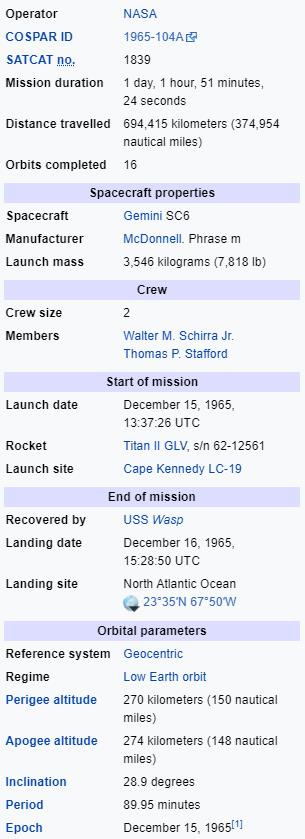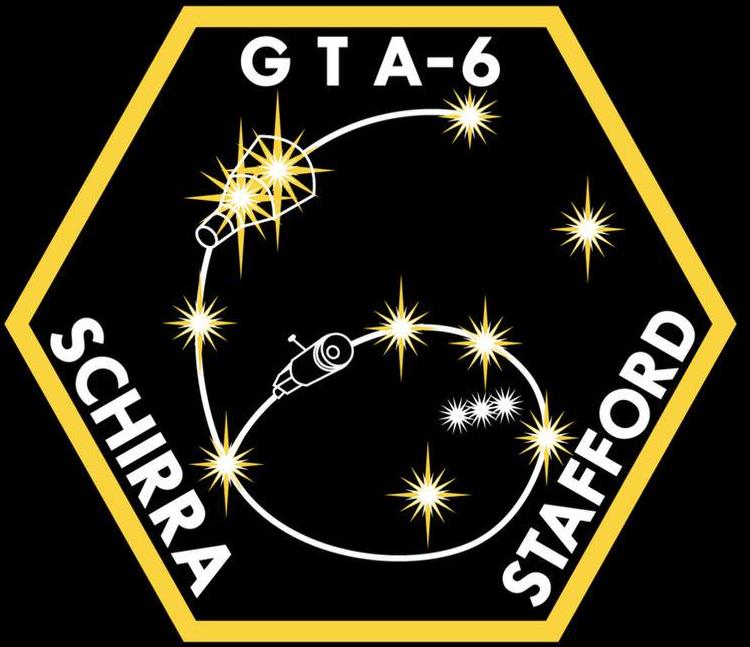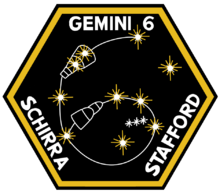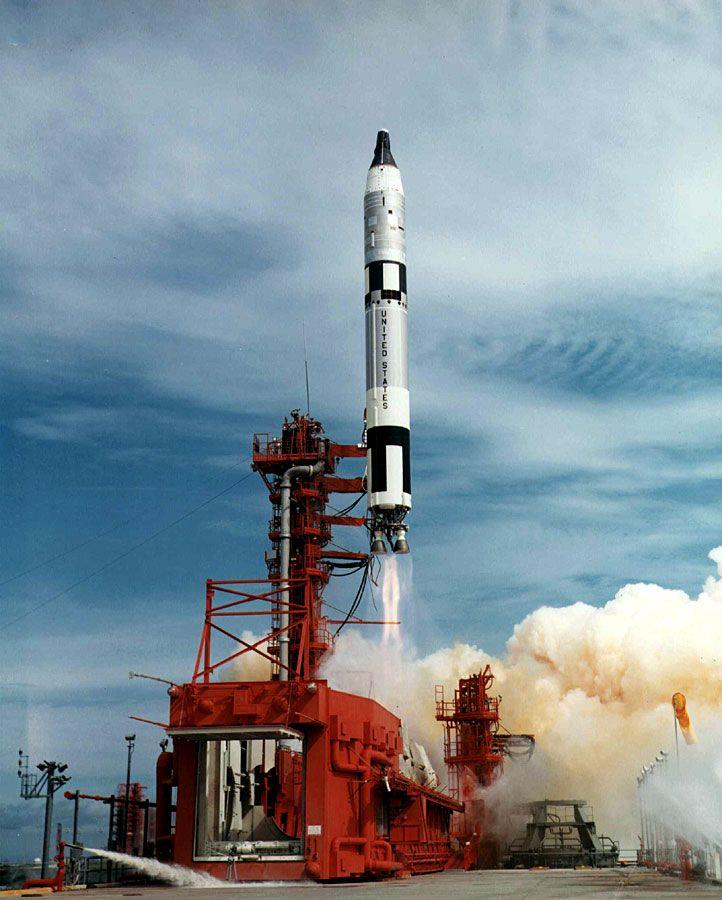Walter M. Schirra Jr.
(Second Flight)
Pilot
Thomas P. Stafford
Backup Crew:
Command Pilot: Virgil I. Grissom
Pilot: John W. Young
Support Crew:
Command Pilot: Alan L. Bean (Cape CAPCOM)
Pilot: Elliot M. See Jr. (Houston CAPCOM)
Eugene A. Ceman (Houston CAPCOM)
Charles A. Bassett II (Houston CAPCOM)
Gemini 6A (officially Gemini VI-A) was a 1965 manned United States spaceflight in NASA's Gemini Programme. The mission achieved the first manned rendezvous with another spacecraft, its sister Gemini 7. Although the Soviet Union had twice previously launched simultaneous pairs of Vostok spacecraft, these established radio contact with, but came no closer than several kilometers of each other, while the Gemini 6 and 7 spacecraft came as close as one foot (30 cm) and could have docked had they been so equipped.
Gemini 6A was the fifth manned Gemini flight, the 13th manned American flight, and the 21st manned spaceflight of all time (includes X-15 flights over 100 kilometres (62 mi)).
(First Space Flight)
Astronauts:
Study
Research
Main Index
Space Cosmology
Science Research
*
About
Science Research
Science Theories
Desk
Site Map
BookShelf
Copyright © by Nigel G Wilcox · All Rights reserved · E-Mail: ngwilcox100@gmail.com
Designed by Nigel G Wilcox
Powered By AM3L1A
Pages within this section: Gemini Manned Space Flights
Gemini 6
Pages within this section:
1
M
8
SM
Sub-Menu
menu
2
3
4
5
6
7
8
9
Gemini Manned Missions
Gemini 6A

The original Gemini 6 mission, scheduled for launch on October 25, 1965 at 12:41 pm EDT, had a planned mission duration of 46 hours 47 minutes, completing a total of 29 orbits. It was to land in the western Atlantic Ocean south of Bermuda.
The mission was to include four dockings with the Agena Target Vehicle. The first docking was scheduled for five hours and forty minutes into the mission. The second was scheduled for seven hours and forty-five minutes, the third at nine hours and forty minutes, and the fourth and final docking at ten hours and five minutes into the mission. The final undocking would take place at 18 hours and 20 minutes into the mission. At 23 hours and 55 minutes into the mission, while the spacecraft passed over White Sands, New Mexico, the crew was to attempt to observe a laser beam originating from the ground. The retrorockets were scheduled to be fired at 46 hours and 10 minutes into the mission over the Pacific Ocean on the 29th orbit.
Original mission plans also included the first live television coverage of the recovery of a US spacecraft at sea from the recovery ship, the US aircraft carrier Wasp. The Wasp was fitted with ground station equipment by ITT to relay live television, via the Intelsat I (nicknamed the "Early Bird") satellite.
Original mission cancelled
On October 25, 1965, Schirra and Stafford boarded their Gemini 6 craft to prepare for launch. Fifteen minutes later, the uncrewed Atlas-Agena target vehicle was launched. After a successful burn of the Atlas booster, the Agena's secondary engines fired to separate it from the Atlas. But immediately after the Agena's primary engine fired at the six-minute mark in its flight, telemetry was lost. A catastrophic failure apparently caused the vehicle to explode, as Range Safety was tracking multiple pieces of debris falling into the Atlantic Ocean. After 50 minutes, the Gemini launch was cancelled.



Command Pilot:
















